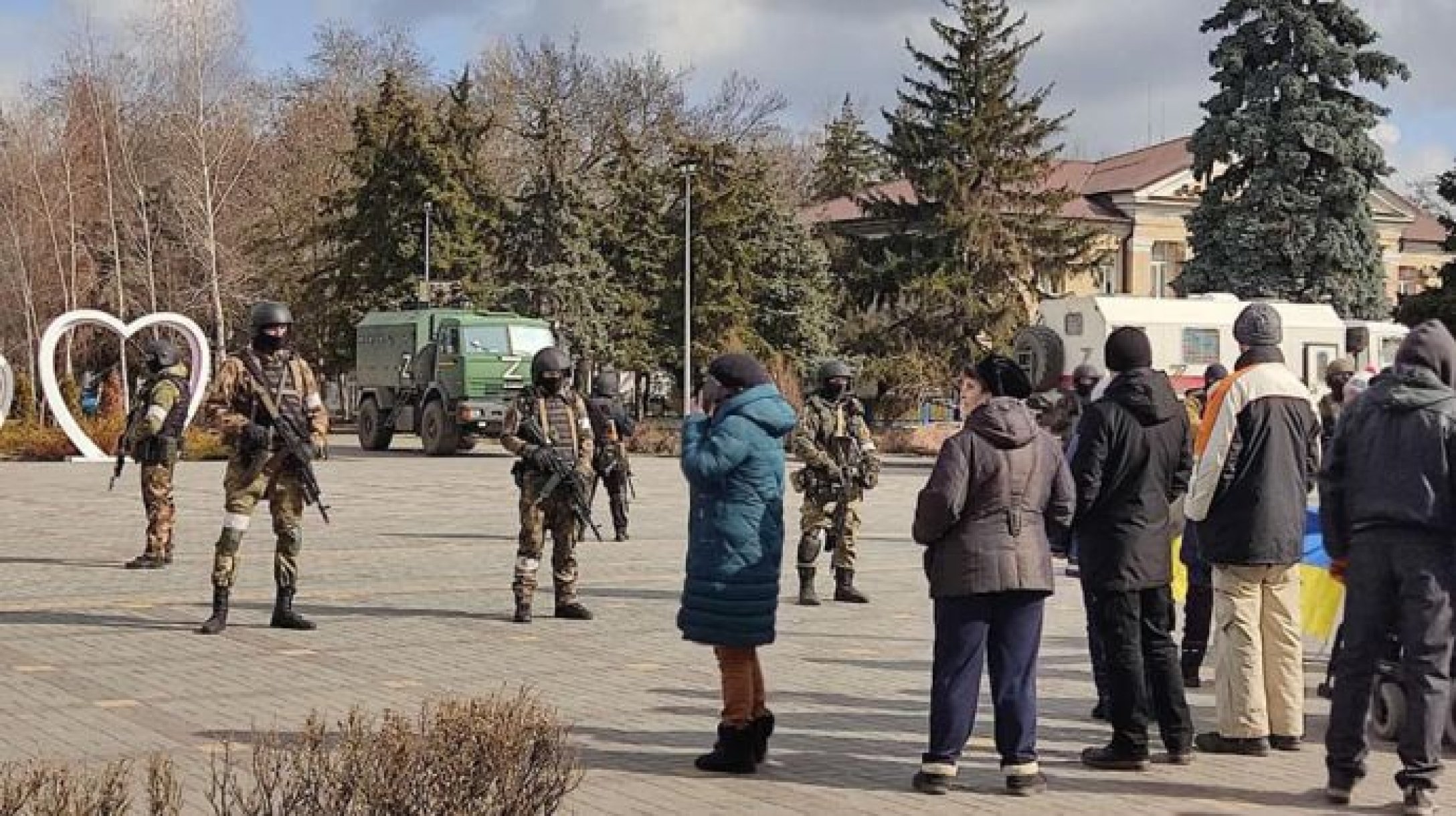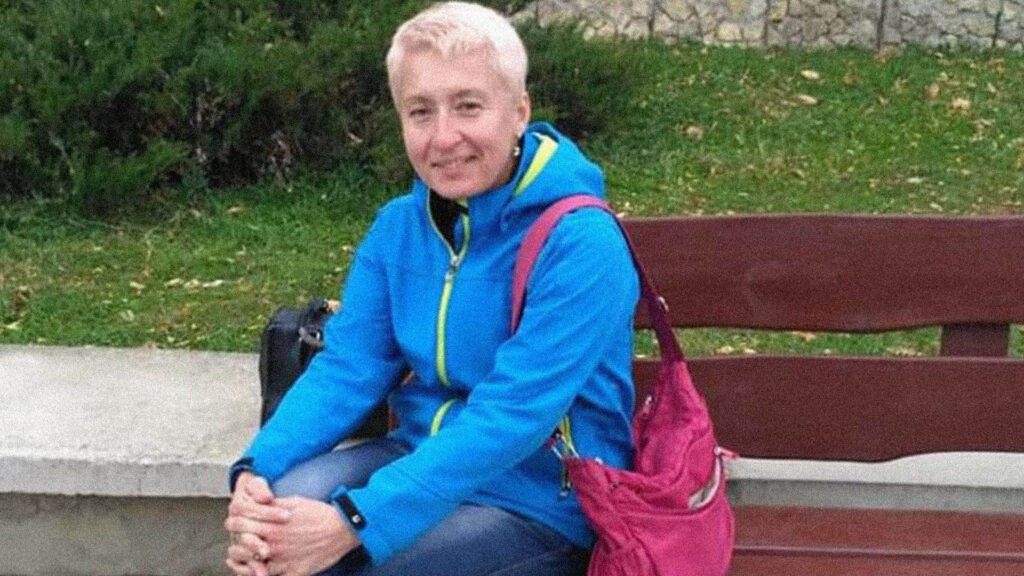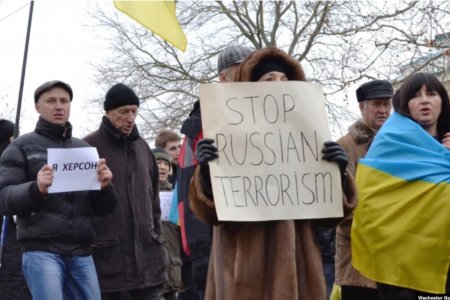
Both the Ukrainian authorities and the Russian invaders underestimated the level of civic activism and patriotism in Kherson oblast, a recent study by Liudmyla Tiahnyriadno, writing for the ZMINA Human Rights Centre, suggests. The Russians who swarmed into parts of Kherson oblast at the beginning of Russia’s full-scale invasion expected to be greeted with open arms, and instead met with anger and resistance, with locals taking part in pro-Ukrainian demonstrations and partisan activities. The Russians began opening fire and hurling smoke grenades to drive the protesters away, and hunting down all those seen as a threat for their pro-Ukrainian position and their activism. The city remains under occupation, and it is impossible for investigators to probe the most horrific allegations regarding the public execution of 58-year-old Tetiana Mudryenko, who certainly appears to have been killed because of her pro-Ukrainian position.
ZMINA spoke with another person from Skadovsk who both saw and himself endured the torture and mock executions that the Russians bring to any area that falls under their control. He managed finally to leave, but clearly has family remaining in the city and is identified only as Oleksiy (not his real name) - a civic activist and blogger who took the first shots of the invasion, He has described the beatings and torture he faced, and also given an account of how he was forced to dig a pit, with the Russian invaders clearly intending him to think he was digging his own grave. This, ZMINA notes, is a method of terror and intimidation that the Russians often use.
Skadovsk, a port city on the Black Sea, fell under Russian occupation from the middle of March 2022. The city’s enforcement bodies had left Skadovsky, first for Kherson, then Mykolaiv, at the beginning of the invasion, with the role of organizing a civic patrol of the city taken by the Mayor of Skadovsk, Oleksandr Yakovlyev and members of the City Council. Oleksiy was among around 250 Skadovsk residents who took part in patrolling the city for protection and to prevent looting. There were also pro-Ukrainian demonstrations, with people carrying Ukrainian flags and singing the national anthem. It was this, Oleksiy believes, that probably riled the invaders and led to them coming for a relatively small city that they had initially ignored, while concentrating on seizing Kherson.
Oleksiy says that the Russians immediately seized the Mayor of Skadovsk, with a Russian Guard unit all in full military gear, and other Russians (in all around 180 men) on the central square of the city. The Russians moved into the Slava Children’s Camp where they proceeded to set up a first torture chamber. They then took over the police station and used the basement there as a remand centre where they held and interrogated people.
It was after the Russians seized not only the mayor, but also his deputy and the City Council secretary, that residents of the city came out in protest. The Russians reacted with force, shooting into the air and throwing both stun and smoke grenades. They also began hunting down those with a pro-Ukrainian position. They first came for a friend of Oleksiy’s, then later for him, and several times. He was beaten with a baton or hammer, tortured with electric currents and tweezers, attached to his fingers.
Oleksiy explains that he had been able to wipe his telephone clear, and did not think he had anything particularly to fear, as he had no contact with Ukraine’s Armed Forces. Any expectation that he would be treated in a more civilized way as he had himself turned up when summoned soon vanished. The Russians were suspicious that his phone was empty, which suggested that he’d had something to hide. Asked what they were trying to extract through the beatings, electric current torture, etc., he says that they seemed to have information that he was some kind of James Bond figure, and were also aware that he was the administrator of a Facebook page and wanted to find any Telegram channels that he administered. He was left with broken ribs, concussion and painful damage to his fingers from the tweezer torture.
In fact, one of the motives for such torture was to force him into producing one of their propaganda videos, in which he had to tell Skadovsk residents not to ‘provoke’ the Russians. He does not know why they came for him a second time, a month and a half after the first time. It was during the second period that the Russians came for him in the morning, put a cap over his head, thrust a spade into his hand and forced him to dig a hole which was clearly aimed to be of human size. Understandably, he feared that he was digging his own grave. By the time they came for him again, he had managed to leave Skadovsk.

Tetiana Mudryenko
Mudryenko, who was 56 and a nurse, and her husband, 60-year-old Anatoly Orekhov, were abducted by the Russians from the courtyard of their home in Skadovsk on 7 October 2022. Tetiana’s twin sister, Natalia Chorna, learned of this from a closed social media group made up of pro-Ukrainian Skadovsk residents. It was, seemingly, from other members of this group that she also saw a photo of her sister’s body in the morgue and a copy of the death certificate which named “asphyxiation” as the cause of death. Chorna later told the Media Initiative for Human Rights that a local resident had told her that her sister had been publicly hanged in front of the court building, with people suggesting that this might have been because of her phrase “Skadovsk is Ukraine” and because she had openly berated the former Ukrainian police officers collaborating with the invaders. It is believed to have been these traitors who came for Mudryenko and her husband. He had reportedly been released to bury his wife, but had evidently been very badly beaten. Nobody seems to know what happened to him after that.



